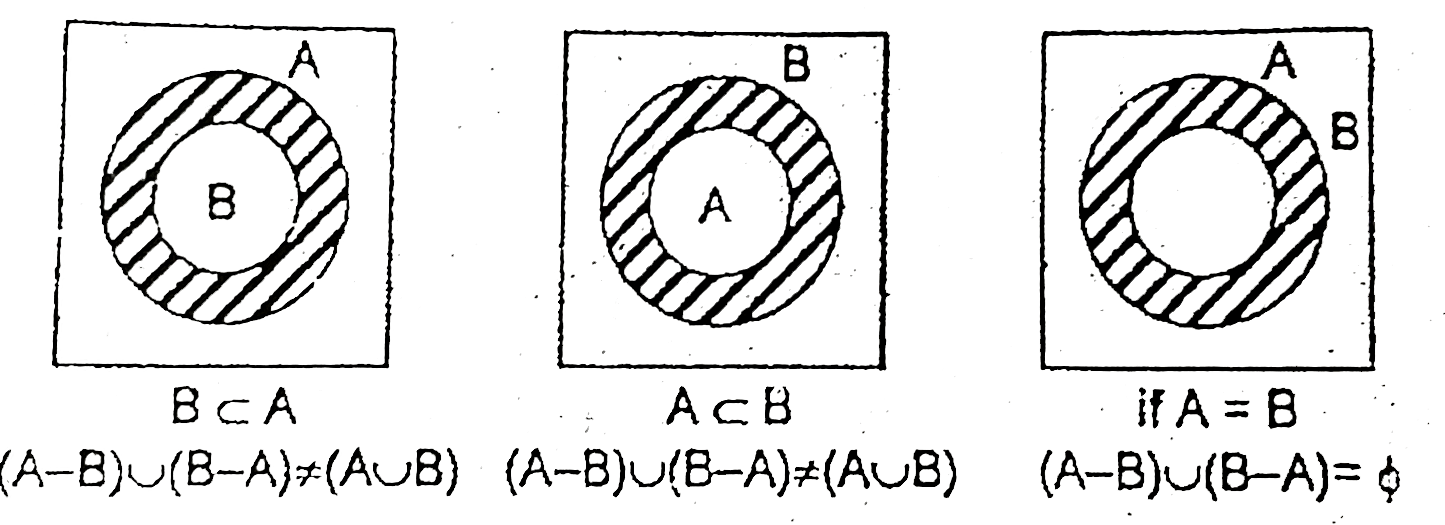Let A,B be two non empty subsets of a set P. If (A−B)∪(B−A)=A∪B then which of the following is correct (X is universal set)
A
A⊂B
B
A⊂(X−B)
C
A=B
D
B⊂A
Video Solution
Text Solution
The correct Answer is:B
Let A,B be two non…………..

|
Updated on:21/07/2023
Topper's Solved these Questions
- BOOK - RESONANCECHAPTER - TEST PAPERSEXERCISE - PART : 1MATHEMATICS SEC - 11videos
TEST PAPERS
- BOOK - RESONANCECHAPTER - TEST PAPERSEXERCISE - PART : 1MATHEMATICS9videos
TEST PAPERS
- BOOK - RESONANCECHAPTER - TEST PAPEREXERCISE - CHEMISTRY37videos
TEST PAPER
- BOOK - RESONANCECHAPTER - TEST SERIESEXERCISE - MATHEMATICS131videos
TEST SERIES
Similar Questions
Knowledge Check
- Question 1 - Select One
Let A and B be two non-empty subsets of a set X. If (A−B)∪(B−A)=A∪B, then which one of the following is correct?
AA⊂BBA⊂(X−B)CA=BDB⊂A - Question 2 - Select One
Let A and B be two non-empty subsets of a set X. If (A−B)∪(B−A)=A∪B, then which one of the following is correct?
AA⊂BBA⊂(X−B)CA=BDB⊂A - Question 3 - Select One
A and B are non-empty sets A - B = A and B - A = B. Then which of the following is true ?
AA⊂BBB⊂ACA and B are disjointDA = B
Let A and B be two non-empty subsets of a set X such that A is not a subset of B then
View SolutionLet A and B be two non-empty subsets of a set X such that A is not a subset of B then
View SolutionLet A and B be two non-empty subsets of a set X such that A is not a subset of B, then
View SolutionIf A and B are two non empty sets and n(A×B)=36, then which of the following cannot be equal to n(B)?
View SolutionIf A and B be subsets of a set X. Then
View Solution

